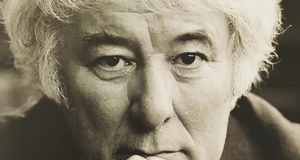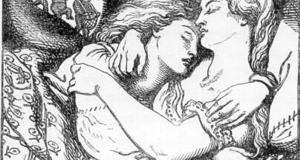Featured Article:The Poetics of Witnessing in the Works of Seamus Heaney
By
2018, Vol. 10 No. 03 | pg. 1/1
KEYWORDS:
In his poem ‘Punishment’ from the poetry collection North (1975), Seamus Heaney picks up the voice of a witness who is suspended between the possibilities of love, silence, voyeurism, outrage and above all, the understanding of the process of violence that brings the ‘numbered bones’ of the corpse it describes to its present state. While it would no doubt be too obvious a strategy to read Heaney’s personal voice in that of the speaker of this poem, there are nonetheless resonances in this state of paralysis between mutually irreconcilable positions that brings to mind Heaney’s description of his childhood in the speech ‘Crediting Poetry’ (1995) where he recounts how his child-self was ‘already being schooled for the complexities of his adult predicament, a future where he would have to adjudicate among promptings variously ethical, aesthetical, moral, political, metrical, sceptical, cultural, topical, typical, post-colonial and, taken all together, simply impossible.’ I almost love you
but would have cast, I know, the stones of silence. I am the artful voyeur of your brain's exposed and darkened combs, your muscles' webbing and all your numbered bones. (Punishment) ‘Punishment’ reproduces the torment of this sensation of experiencing multiple promptings at once, to the point that even if we resist reading it as a go-to for some mirage of the authentic poetic voice or something as naïve as that, it still functions as a explication and example of the kind of concerns that created the poetic voice of Seamus Heaney, a voice that narrates self-consciously, ‘weighing and/ weighing/ [its] responsible tristia’ (‘Singing School’). Richard Kearney, in his book Transitions, elaborates on this oscillating, equidistant quality of Heaney’s poetry when he says that it is always ‘vacillating between opposing viewpoints, looking in at least two directions at once’ (Kearney 102). While I think this is completely correct in itself, it stops shorts of describing what Heaney’s language actively accomplishes. To call it ‘vacillation’ is to see witnessing and universal accountability of vision as an inadequacy and a half-hearted habit. It is neither. If poetic language does indeed ‘construct and deconstruct’ identity (103), then Heaney’s particular brand of poetic language deliberately infects identities with one another, until their extant overlap and ambivalence of border becomes apparent to us.Heaney occupies a deliberately hesitant, liminal position. He declares he is ‘neither internee nor informer; /An inner émigré, / grown long-haired / And thoughtful’ (‘Singing School’). This liminality, which has earned him controversy—including being called an ‘artful dodger’ when it comes to political responsibility—renders him uniquely sensitive to the troubled and contradictory vulnerabilities in all sides of the conflict that he documents through his poetry. Many of his poems, such as ‘Digging’, ‘Bog Queen’, ‘Strange Fruit’ and ‘Station Island’ to name but a few, undertake the task of relentlessly witnessing both the mundane and the dreadful: two types of sight that we usually avert our eyes from. Heaney insists on looking at ‘the cavings of the stomach/ and socket’ (‘Bog Queen’), a ‘girl's head like an exhumed gourd’ (Strange Fruit) and the ‘black glacier’ of funerals (‘Funeral’): disparate as they are, all of these images exemplify the startling turn of metaphorical visuality that characterises Heaney’s descriptions. In each instance, the description of a corpse or a post-mortem sight is crafted to be seen differently. Heaney’s language introduces an immediacy that both momentarily strips them of their historical, political and social context but also zooms into the details with such an intensity of gaze that what appears to us as a result of the heightened seeing is almost completely unrelated to the original fact of a peat-preserved corpse or a sad funeral. The strategy of magnification is not accidental. It is deeply embedded into Heaney’s political stance as what Paul Gilroy would call a ‘planetary humanist’. Heaney’s poetic vision extends to all sides of a conflict, all actors too, regardless of their immediate sympathies. As Jahan Ramazani’s essay, “Cosmopolitan Sympathies,” shows, Seamus Heaney’s poetry is richly influenced by the dangerous, disobedient and firmly cosmopolitan sympathies of World War poets, such as Isaac Rosenbaum and Wilfred Owen. It is no surprise then that what Jahan Ramazani calls the ‘docupoetic framework’ of Rosenberg’s poetry (and in particular, his poem, ‘Break of the Day in the Trenches’) applies equally to a poem like ‘Strange Fruit’ where the point of the startling metaphors is to shake the images free of habits of seeing, making the ‘murdered, forgotten, nameless, terrible/ beheaded girl’ newly visible and newly unacceptable. Published in 1975, during the Troubles in Northern Ireland—a time of detainment, killings and chaos of political loyalties—the description of this bog body as a murdered corpse immediately alerts us to its symbolism as an analogy for more contemporary atrocities. It makes us think of fresh corpses which may be equally disfigured and anonymized by the so-called civilized contemporaneity. But is visibility always an ethical thing? More importantly, what is its relationship with visuality? In ‘Punishment’, the poet calls himself ‘an artful voyeur’, and yet, the lines following that declaration, describing the ‘brain's exposed/ and darkened combs, [the] muscles' webbing/ and all [the] numbered bones’ expose a mode of seeing that is neither voyeurism nor its more respectable counterpart, spectatorship, but a much more accountable mode: witnessing. What prevents the images from turning into consumable sights, in spite of their high lyric quality and aesthetic density is the fact that Heaney manages to separate aesthetic from the idea of beautiful in his descriptions of violence, death and the quotidian. Thus, instead of making violence beautiful, these poems make it inescapably visible. This, of course, does not imply a documentary value. The kind of seeing that ‘Punishment’, ‘The Tollund Man’ and ‘The Strand at Lough Beg’ undertake is one that is necessarily imagined, but it involves the overcoming of both geographical and temporal distance to enforce what Nicholas Mirzoeff calls ‘the right to look’. And in his essay of the same name, Mirzoeff defines the ‘right to look’ as the opposite of visuality’. He defines visuality as the following: Visuality is an old word for an old project. It is not a trendy theory-word meaning the totality of all visual images and devices, but it is in fact an early nineteenth-century term, meaning the visualization of history. This practice must be imaginary, rather than perceptual, because what is being visualized is too substantial for any one person to see and is created from information, images, and ideas. This ability to assemble a visualization manifests the authority of the visualizer. (Mirzoeff 474) What Heaney does is precisely imaginary as opposed to perceptual. Heaney visualizes the Bog queen, the Tollund man, the Grauballe man, and his own cousin, Colum McCartney as characters full of life and love and rage. These visualizations, at least in the first few instances, is certainly ‘created from information, images and ideas’. ‘The Tollund Man’ carries the most open acknowledgement of this, as the poet begins with the idle thought that ‘some day [he] will go to Aarhus’ where he will ‘stand a long time’. And yet, as the poem ends, there is a reticence about the actual, physical act of journeying to the reality: ‘Out there in Jutland/ In the old man-killing parishes / I will feel lost, / Unhappy and at home.’ In other words, the physicality and facticity of Heaney’s inspirations are ultimately subordinate to the imaginary that he creates out of them. The opposite happens in ‘The Strand at Lough Beg’: the poet desires to go into a landscape and become a witness and mourner at the site of Colum’s killing, but instead of a real sojourn, it is instead a wish-fulfilment and a sublimation of the atrocity into a scene of redemption by way of Dante’s Purgatario. Here, witnessing becomes both a mode of reclaiming a moment that has irreversibly passed and also a way for the inevitable (Colum’s murder) to be redeemed and made comprehensible by preventing Colum from being trapped in Hell and releasing him through the ritual of ‘plaiting[ing] / Green scapulars to wear over [his] shroud.’ Mirzoeff is correct in that this ability to ‘assemble a visualization’ out of what is effectively the unseen and unknown is a power and one that rests solely with the poet. But the reason why Heaney is able to combine visuality with the right to look (or, in other words, accountability) is because he uses language and visuality to practice a humanism that truly resurrects the Other, even if from history. Thus, in ‘Station Island VIII’, Colum returns to us, accusing the poet:
The initial rhyming of ‘fact’ and ‘tact’ achieves a forceful exposition: something that becomes hard to untangle from, even as the momentum slows down with the enjambment in line 70-71, and the admission of atonement on line 72 automatically refers back to the original ‘whitewashing’ which was also an attempt at atonement of the absence and inability of the poet to help during the final moments of the ghostly speaker’s life. But the rhyming scheme too thins to a-b-a to indicate a lessening stridence, even as the speaker is himself forced to admit the ‘lovely’ quality of what obscures his death. This ambivalent accommodation of critical voices that are unavailable to realist modes is what makes the poetic language unique and indispensable to Heaney’s humanism. In his book Postcolonial Melacholia (2005), Paul Gilroy defines planetary humanism as an ‘agonistic’ capability of ‘comprehending the universality of our elemental vulnerability to the wrongs we visit upon each other’. Heaney’s technique of elaborate and unsparing witnessing does exactly this even as it goes further to acknowledge that despite the universality of vulnerability, the witness nonetheless occupies a more privileged position (alive, speaking) compared to those s/he describes. Establishing the fact that Heaney does indeed use poetry to perform witnessing of atrocities and their ‘whitewashing’ into beauty brings us to new questions. The first is that old question we have been grappling with in our Global Poetry seminars: exactly how does poetry (as opposed to prose or drama) contribute to this quest for remembrance and acknowledgement? Secondly, like the fictive voice of the ghostly Colum, are we, the readers, too forced to ask why there is at all any need to aestheticize what is ‘ugly’, whether that ugliness be of the ‘wet, bottomless center’ of the bog land or the slaughter of Catholics in Ireland. A clue may lie in Heaney’s own words in his introduction to the 2000 translation of Beowulf. On pg. xxi of this book, Heaney talks about how ‘[a]t…moments of lyric intensity, the keel of poetry is deeply set in the element of sensation while the mind’s lookout sways metrically and far-sightedly in the element of pure comprehension.’ It is telling that these lines elucidate the end of Beowulf where the hero is given his funeral: an elegiac passage much like the Strand at Lough Beg and its counter-poetic chapter from ‘Station Island’, section VIII. The word ‘comprehension’ is the most striking one for me. Heaney seems to be suggesting that while on the level of lyric, poetry is an aesthetic mode, in moments of lyrical success, it can also become a way towards comprehension of what would be otherwise incomprehensible. Perhaps in one aspect, the lack of comprehensibility can be linked to the unutterability and repetitiveness that we associate with trauma. To use Freud’s term for it, ‘melancholia’ is a mode of grappling with loss that involves ‘profoundly painful dejection, cessation of interest in the outside world, loss of the capacity to love, inhibition of all activity and the lowering of self-regarding feelings to a degree that finds utterance in self-reproaches and self-revilings’ (Freud 224). In the passage from ‘Station Island’ quoted above, a sense of not deserving the love of the departed and arrested movement (lying on bed, ‘atoning’) pervades language. And yet, paradoxically, by choosing having the dead reappear and utter the accusations at the poet, the poem frees itself from this melancholia and reaches a moment where both the ‘right to look’ on part of the poet and that on the of part of the gazed-at corpse has been defended. In this way, mourning not only dispels melancholia, but in its lyrical intensity, joins the imagist, assembled nature of visuality and the accountability underwritten in the discourse of visibility. In conclusion, as Heaney observed in ‘Crediting Poetry’, he always wanted the ‘truth to life to possess a concrete reliability, and rejoiced most when the poem seemed most direct, an upfront representation of the world it stood in for or stood up for or stood its ground against’. This obsessive engagement with poetry as an ‘upfront representation’ takes us to Gayatri Chakravorty Spivak and her useful differentiation between representation as “speaking for” as a representative (vertreten) contra representation as “re-presentation” (darstellen) in her essay “Can the Subaltern Speak?” (1988). Heaney’s poetry flits between these two modes representation and each mode determines whether his truth speaks the truth to life for the world ‘it stood in’ or for the world it ‘stood up for’. In ‘Bog Queen’, he speaks through the fictive voice of the bog queen committing representation in the sense of vertreten; in ‘Strand at Lough Beg’, ‘Singing School’, ‘Punishment’ and countless other poems, he speaks for others and even stands up for them. And yet both modes of representation are woven together by a central commitment to compassion and the need to make space for the voices of others who are absent to his readers. In other words, Heaney’s poetics bring to life those who cannot speak for themselves, and it is in this invocation that occurs irrespective of geographical, political and temporal boundaries that his planetary humanism lies. ReferencesHeaney, Seamus.North. Faber and Faber, London.1992. Heaney, Seamus. Beowulf: A New Verse Translation. Faber and Faber, London, 2007. Heaney, Seamus. “Crediting Poetry: The 1995 Nobel Lecture.”World Literature Today, vol. 70, no. 2, 1996, pp. 253–259., www.jstor.org/stable/40152040. Freud, Sigmund, et al.The Standard Edition of the Complete Psychological Works of Sigmund Freud. XIV, London, Hogarth Press, 1955. Gilroy, Paul.Postcolonial Melancholia. Columbia University Press, 2005. Kearney, Richard. Transitions: Narratives in Modern Irish Culture. Manchester: Manchester UP, 1988 Mirzoeff, Nicholas. “The Right to Look.”Critical Inquiry, vol. 37, no. 3, 2011, pp. 473–496., www.jstor.org/stable/10.1086/659354. Ramazani, Jahan. "“Cosmopolitan Sympathies”: Poetry of the First Global War."Modernism /modernity, vol. 23 no. 4, 2016, pp. 855-874.Project MUSE,doi:10.1353/mod.2016.0077 Spivak, Gayatri Chakravorty.Can the Subaltern Speak?Basingstoke, Macmillan, 1988. Suggested Reading from Inquiries Journal
Inquiries Journal provides undergraduate and graduate students around the world a platform for the wide dissemination of academic work over a range of core disciplines. Representing the work of students from hundreds of institutions around the globe, Inquiries Journal's large database of academic articles is completely free. Learn more | Blog | Submit Latest in Literature |


















